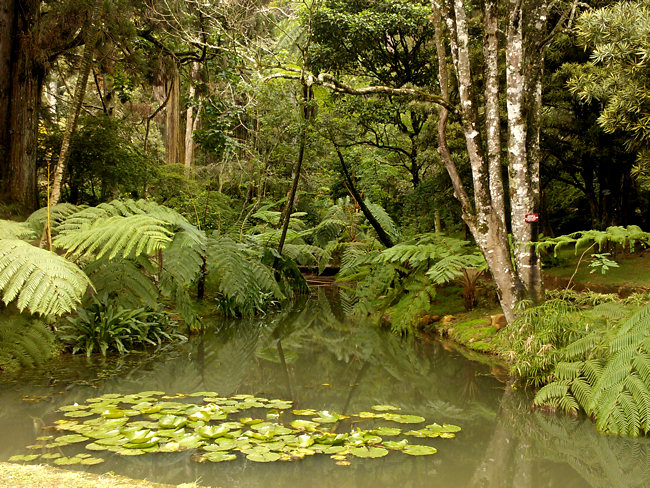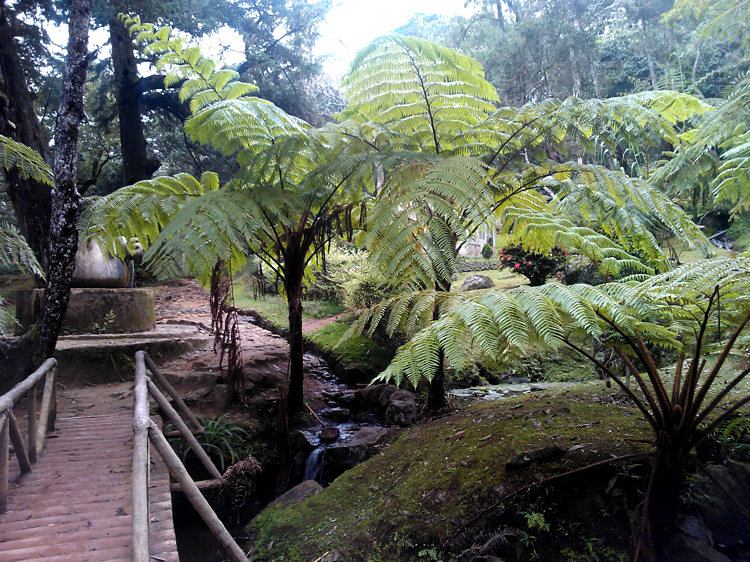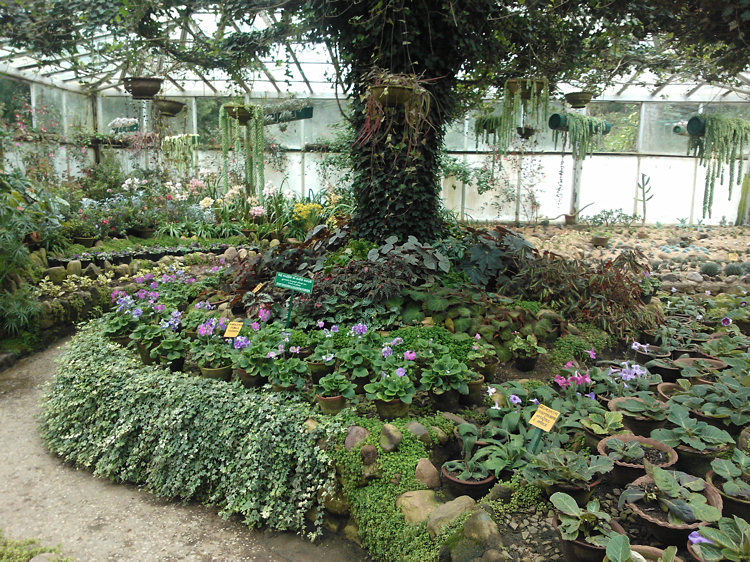Hakgala Botanical Gardens
Like Kandy, Nuwara Eliya has its own Botanical Gardens a short distance outside of town. It is open 365 days of the year 7.30am to 5pm. It is about 7miles (10km) south east of Nuwara Eliya. Haggle with the Tuk-Tuk driver for a one way price.

Nuwara Eliya Hakgala Botanical Gardens water feature in Sri Lanka
It is about 7miles (10km) south east of Nuwara Eliya. Haggle with the Tuk-Tuk driver for a one way price. Write the price that has been agreed down on a piece of paper and show him to confirm the price. There are lots of Tuk-tuks outside the Gardens that are only too willing to take you back into town.
It is an interesting journey as you are driven past all the English style large houses, the race course and the newly landscaped lake Gregory. The hills are dramatic and on the left you will pass the Sita Eliya Hindu Temple. Ask your driver to stop. Take your shoes off. And have a quick look at the carvings of the Hindu Gods. Look up in the trees on the other side of the river behind the temple. You may be lucky and see monkeys playing around in the upper most branches.
Malaria was a problem in certain parts of Sri Lanka. More quinine was needed. It was obtained from the cinchona plant. In 1860 the Botanical Gardens at Hakgala were started in order that the cultivation of Cinchona could be studied and experiments conducted. Quinine is a principle ingredient of tonic water.

Nuwara Eliya Hakgala Botanical Gardens in Sri Lanka
This is part of the reason why Gin and Tonic was such a popular drink in the 'Hill stations' of the colonial British Empire. The eminent British botanist Dr. G.H.K. Thwaites, who was superintendent of the more famous gardens at Peradeniya, near Kandy, was responsible for their establishment.
The Botanical Gardens are situated 5,725 feet (1745m) above sea level in the mountains among Sri Lanka's tea country. It has a sub-tropical, cool fresh climate with a temperature range of 3oC to 15oC. It receives the rains from two monsoons. The first is in May to August and the other is October to December when heavy cloud bursts of rain fall more regularly in the afternoon and evening.
The best time to visit the Hakgala Botanical Gardens is in April when the plants put on their best display of roses, colourful foliage and temperate annual flowers. It covers 28 hectares of the foot hills of the 2200m Hakgala Rock (also known as Elephant's Jaw Rock). The garden is built on different terraces that spread up the mountain slope.
Higher up you get a good view of the Numunukula Mountain range in the distance. Each part of the garden is dedicated to a different plant species and type. These include many flower gardens, a rose garden, fernery, rock garden, Japanese garden, Arboretum, Eucalyptus (gum tree) plantation and acacia wood.
Again you will see tourists being charged more that local people. This is normal in Asia. Don't grumble about it. You can afford the entrance ticket. The locals cannot. They are only earning a pittance compared with your wage. You are helping maintain these wonderful gardens. The only thing that is disappointing about the gardens is the visitors toilets, although clean, are the hole in the floor style toilets rather than western style toilets. Be very careful walking through wet grass. Check your feet and legs regularly for blood sucking leeches. If possible do not wear sandals or flip-flops.

Nuwara Eliya Hakgala Botanical Gardens greenhouse flowers in Sri Lanka
Travel books

